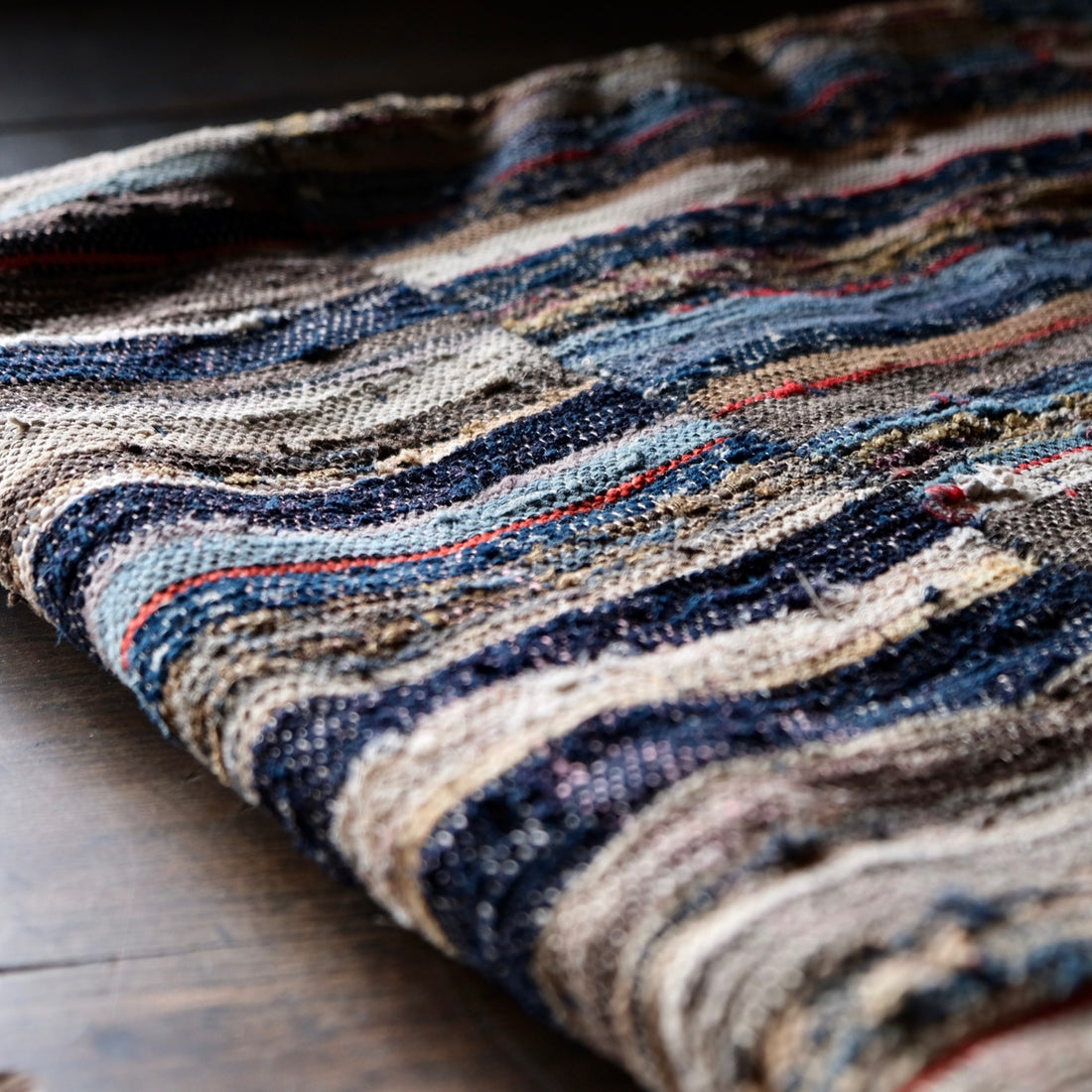"SAKIORI "- Japanese traditional technique to revive beautiful textile.
Do you know "SAKIORI"?
The technique of reviving cloth. It is called SAKIORI, because the torn cloth is used as thread for weaving.
SAKIORI is a traditional upcycling technique that originated in the Edo period.
Women of that time did not throw away used cloth, but developed a technique to revive it.
At that time, the cold climate made cotton cultivation difficult, and cotton transported by ship was very precious. Therefore, it was born from the wisdom of women in rural areas to cherish the cloth.
This traditional cloth is now attracting attention again, along with the Japanese spirit of taking good care of things.

SAKIORI, woven on a loom using thinly torn cloth as the weft and cotton threads as the warp, is durable and warm, and is characterized by its colorful shifting of colors.
The various shades of cloth woven into SAKIORI create stunning gradations reminiscent of morning sunsets and sunrises.
Vintage Japanese SAKIORI is colorful but all natural dyes. Herb dyeing is used to produce these beautiful colors. Sometimes "AIZOME" fabrics are used.

Modern SAKIORI has been reborn and has become popular.
It is fashionable, calculated, and modern.
They are great, but modern SAKIORI and vintage Japanese SAKIORI are completely different.
(My SAKIORI is authentic Japanese Vintage, unfashionable and natural, touching people's lives.)
Vintage Japanese SAKIORI is appreciated in Japan and it is very expensive.
Written by:
Reiko Shiozawa, a Selector of Vintage Blue Japan
This is a blog by a Japanese store owner who deals only in authentic Japanese vintage.
